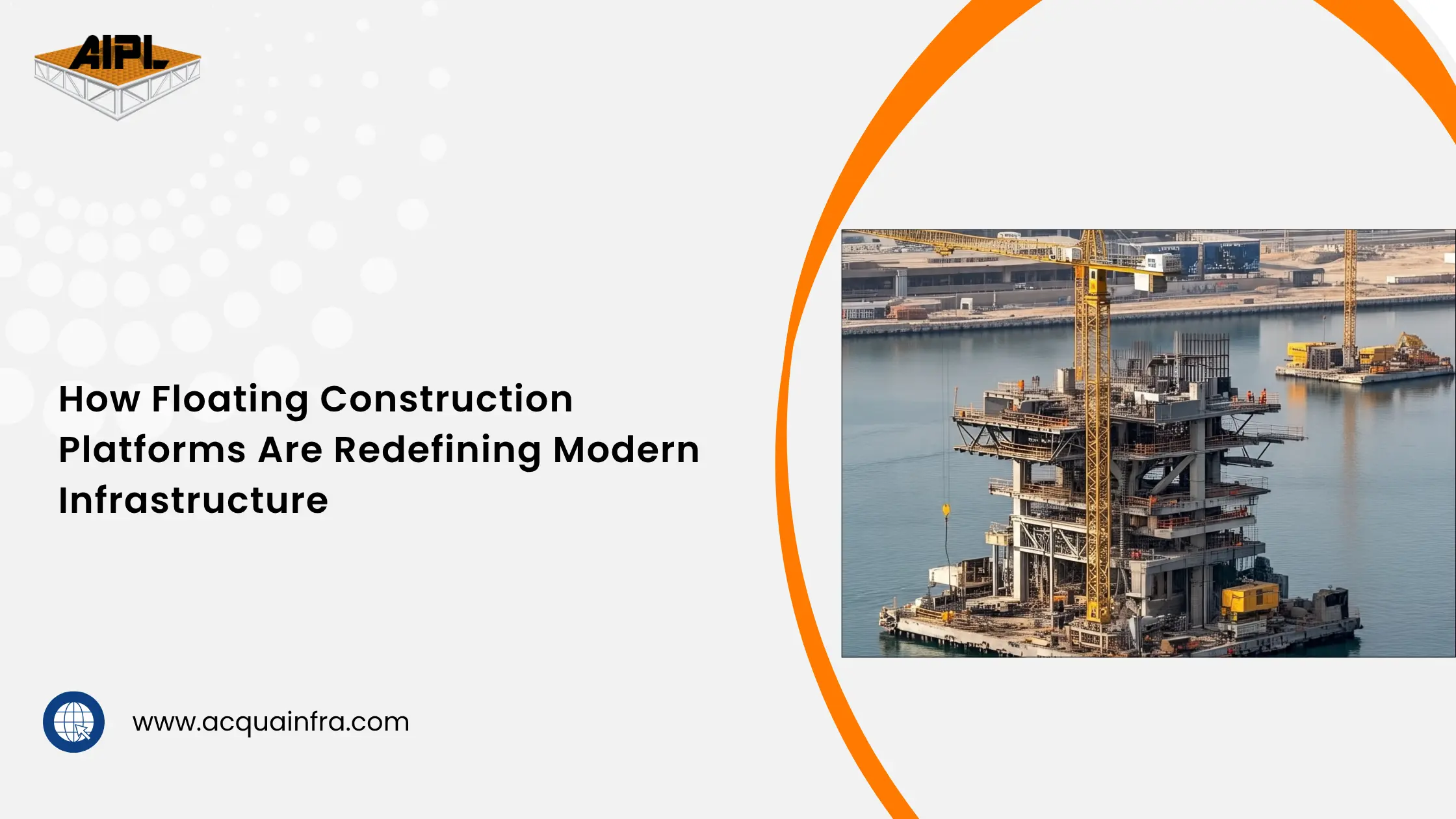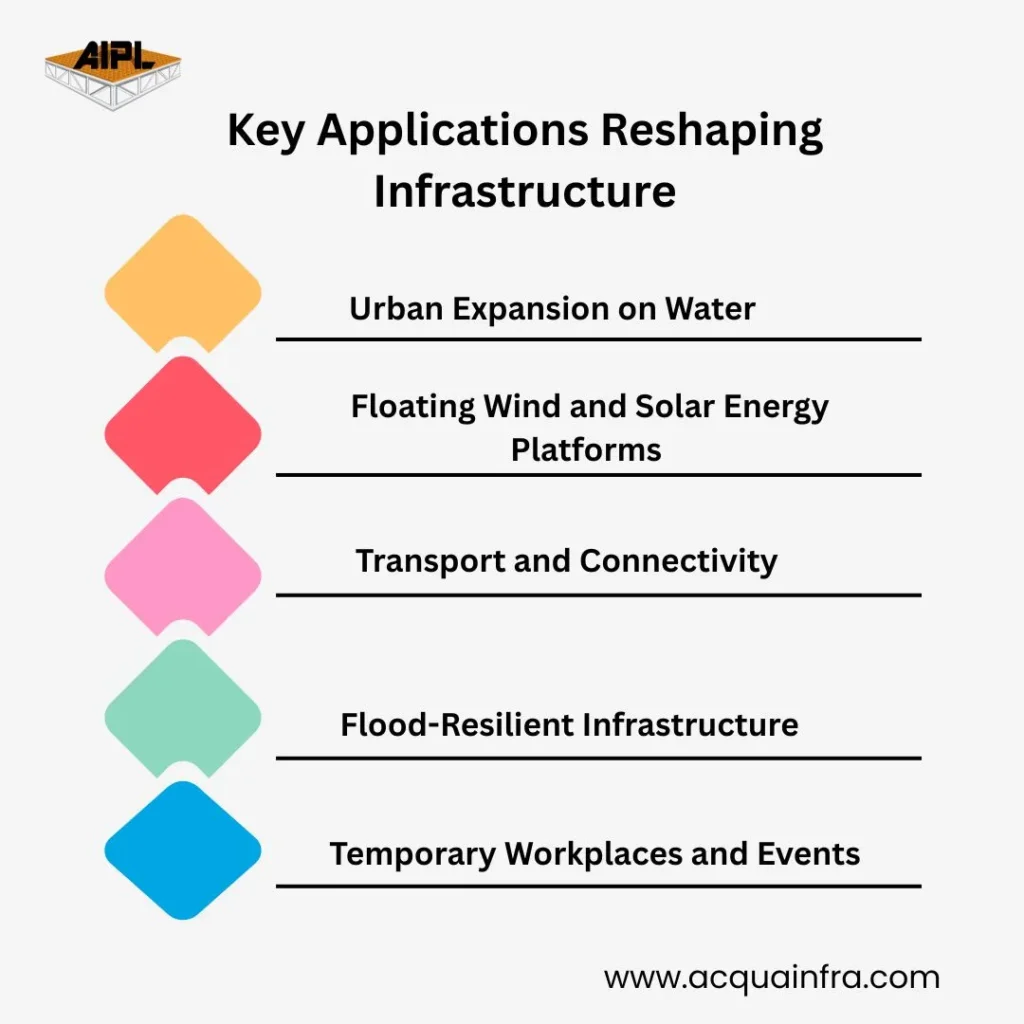
In a world with dwindling land availability and rising environmental challenges, floating construction platforms are now proving to be game-changing solutions. Floating platforms are not only engineering feats but are also providing sustainable, flexible, and affordable alternatives to conventional infrastructure. Floating wind farms, floating bridges, and modular houses - floating platforms are revolutionizing the way we construct and engage with it.
Floating construction platforms are buoyant, designed structures that act as the foundation of construction in water bodies—rivers, lakes, reservoirs, seas, or flood-prone urban areas. They are meant to carry construction equipment, building material, and even full buildings.
Key Characteristics:
Buoyancy and stability
Modular and expandable
Eco-friendly materials
Weather- and corrosion-resistant designs

1. Urban Expansion on Water
Amsterdam and Singapore are considering floating neighborhoods to address housing deficits without disrupting natural ground.
2. Floating Wind and Solar Energy Platforms
Sustainable energy installations are being placed on floating platforms, saving land while efficiently harnessing clean energy.
3. Transport and Connectivity
Pontoons and floating bridges are being utilized to enhance transport in regions with constrained access to land or periodic flooding.
4. Flood-Resilient Infrastructure
Flood areas are constructing schools, clinics, and shelters on floating platforms so that they remain accessible in times of need.
5. Temporary Workplaces and Events
From concert stages to oil rigs, floating platforms enable adaptable, mobile infrastructure that can be built and broken down on demand.
Land Conservation: Leverages water bodies, avoiding the need to reclaim or demolish valuable land.
Sustainability: Most platforms are built from recyclable material and cause minimal disruption to the environment.
Flexibility: Can be moved, altered, or expanded as required.
Cost Effectiveness: Economical foundation and excavation costs as compared to on-land construction.
Climate Change Adaptability: Floating platforms accommodate rising and falling water levels, making them highly suitable for flood areas and coastal cities.
Netherlands: Pioneering floating city development, such as floating farms and residential communities.
Japan: Employing floating platforms for offshore airports and disaster relief shelters.
India: Utilizing floating solar farms on reservoirs and floating classrooms in flood zones.
How AIPL Assists With Floating Pump Pontoons
AIPL (Aquafront Infrastructure Projects Ltd.) has pioneered custom floating pump pontoons designed for:
While floating platforms offer immense potential, they face challenges such as:
Yet, continued innovation in marine engineering, intelligent anchoring systems, and AI-driven water monitoring is progressively overcoming these challenges.
Generally constructed of long-lasting HDPE, aluminum, or concrete pontoons, designed to withstand corrosion and harsh weather.
Either temporary (emergency response) or semi-permanent based on design.
They float with water levels, maintaining a smooth pumping process without the chance of submergence or stranding.
Yes, they're perfect for rural regions with bad drainage, allowing access to clean water and emergency centers.
They study project requirements—terrain, flow, capacity—and provide modular pontoons accordingly.
Floating construction platforms are a bold move toward a more responsive, resilient, and sustainable future. They are no longer a concept for coastal engineers—they are becoming an important aspect of global infrastructure policy in a changing world.
Ready to ride the wave of innovation?
Whether you're a policymaker, builder, or eco-enthusiast, now is the time to explore how floating construction platforms can transform your projects and your community.
👉 Let's Connect! Reach out for consultations, collaborations, or customized floating solutions for your next big idea.